Was the 2020 College Football Season Worth It?
MIAMI — In the uncertain days of July, when nobody knew whether there would or should be a college football season, the angst level was high among university administrators. COVID-19 numbers were soaring—though they would seem pretty tame by today’s horrendous standards—and campuses were largely closed. Were we really going to try to do this?
“I hope we're not selling our souls to the devil to try to play,” a Power 5 athletic director told Sports Illustrated then. It was a sobering quote.
Six months later, with just a single game remaining in a messy but nearly complete season, we circled back to give the same athletic director an exit interview. The single overriding question: Was it worth it?
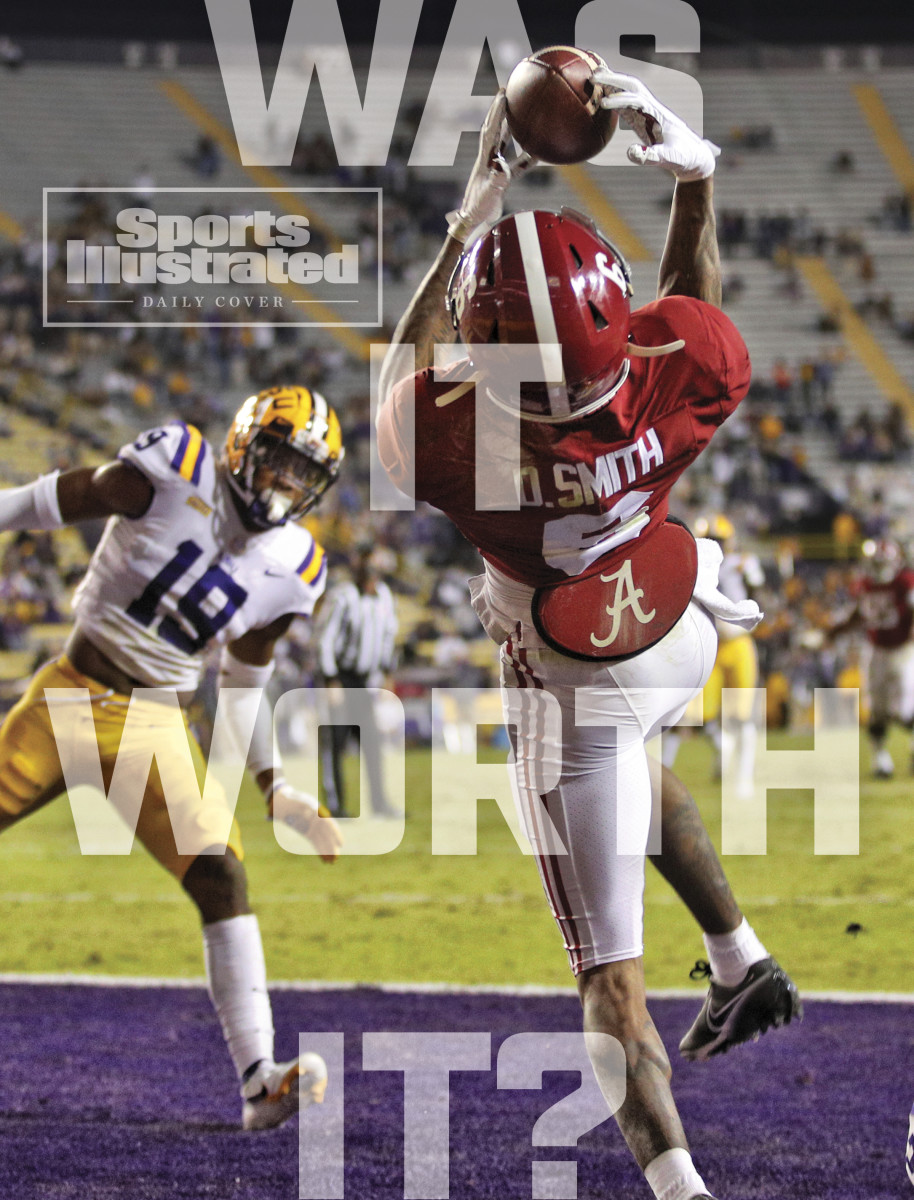
The conclusions: Souls were not sold; scenarios did not reach the worst-case; but the journey was far from great.
“It’s dependent upon each program’s own experience,” the AD says. “I don’t think everything was the same. It was hard. That doesn’t necessarily pertain to how many people got COVID or how many games got canceled, but just the daily difficulties people had to endure.
“I think we kept our athletes healthy. I don’t think we compromised that. We did this because our student-athletes said they wanted to play. The love of the game.
“I’d think here, most of our athletes were glad they played. But I can’t say all of them felt that way. My experience here, and talking to other colleges, by the time we got to the end there was a sense of accomplishment, but even more a sense of relief. This was hard and we’re glad we’re done.
“If we had to go through this again and do it again, I’m not sure everybody is signing up. I’m not sure anybody wants to do this again.”
Indeed, the hope is that a season without fans, a season of constant anxiety and constant swabs up the nose, a season of scheduling chaos, a season that exhausted everyone in pursuit of TV revenue, a season that laid bare how cravenly universities prostrate themselves at the feet of King Football … the hope is that we never have to go through that again.
But lo and behold, there is a champion to be crowned—Alabama and Ohio State will settle it on the field here Monday night. It is a fitting final act, a pair of big-brand programs that are extremely serious about football and extremely serious about winning. The head coach of one program missed his team's big rivalry game after testing positive, and the other program has bulldozed through a series of pandemic impediments and complications—aided and abetted by a conference willing to change its rules to make it happen. If the sport itself has been deemed too big to fail, you could argue that these are its too-big-to-fail flagships.
Even when the season started, there was widespread pessimism about it arriving here, on schedule, with a national title game to be played. “I do think making it to the finish line means that the sport succeeded,” says ESPN’s Chris Fowler, who teams with analyst Kirk Herbstreit on the most prominent broadcast team in football. “I mean, against the odds and against a lot of smart people who thought it wasn't possible, the sport did make it through.”
We did make it to the finish line, despite staggering all over the course.
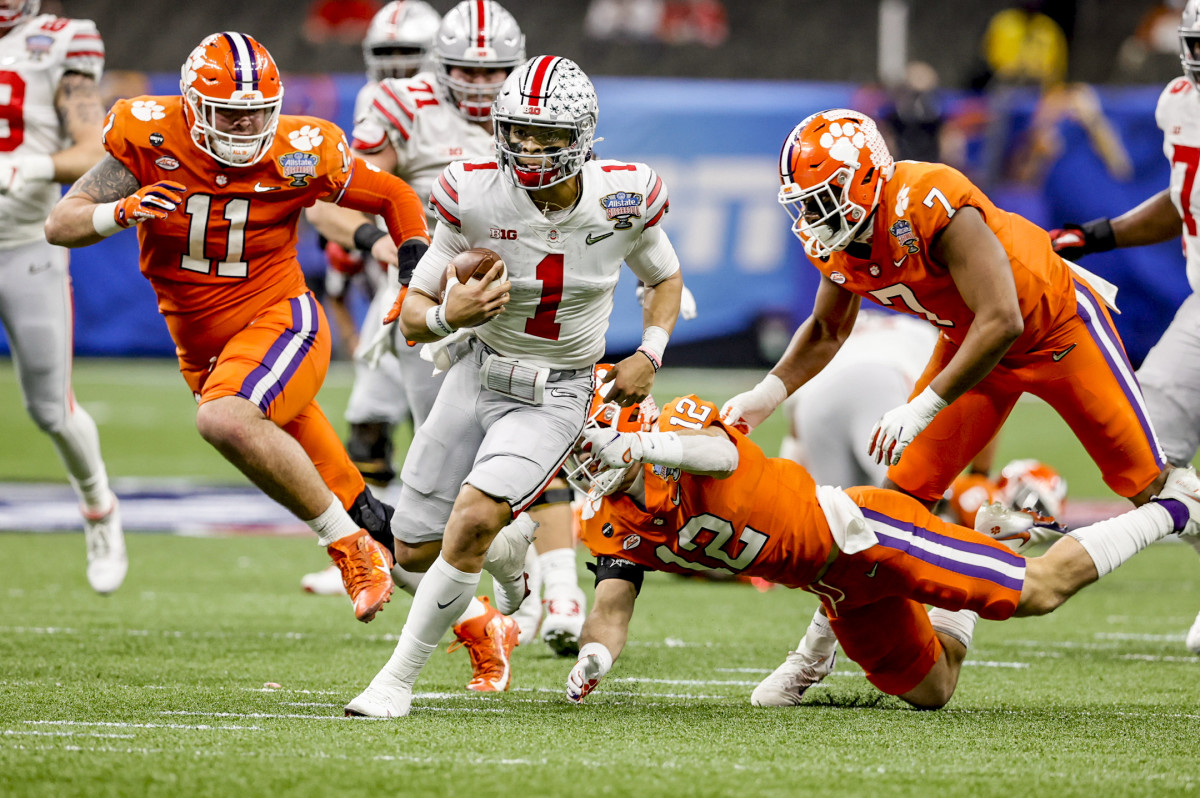
Was it worth it?
At the beginning, players and coaches—the people who had to actually go through the gantlet—were adamant that it would be. At the end, the answers were a bit softer.
“It was a mess,” says Penn State tight end Pat Freiermuth, who turned pro in December at the end of his junior season. “But it was an orderly mess, if that makes sense. I think everyone involved did the best they could. We had 56 false positives at Penn State. There were a lot of inaccuracies, a lot of moving parts. It felt like the same day waking up and doing it over and over and over again.”
Penn State and the rest of the Big Ten teams were whipsawed by debate and acrimony for weeks in late summer and early fall, as the league first canceled and then restored its season. Freiermuth and teammates were on pins and needles, waiting and hoping for the chance to play. Then they got it, and it was something of a be-careful-what-you-wish-for scenario.
Penn State was one of just two Big Ten teams that played all nine of its games, starting 0–5 and then winning four straight. But after routing Illinois on Dec. 19, the school announced that its season was over. The Nittany Lions would not try to even their record in a bowl game. They were done.
“It was mentally draining,” Freiermuth says. “That’s what we told the coaches. It tested everyone. When we opted out of the bowl game, it was kind of a relief to be done with football and go see our families for Christmas.”
Boston College started the bowl opt-out movement on Dec. 10. "People may not fully understand just how grueling this season was,” Eagles coach Jeff Hafley said at the time.
Freiermuth and his Nittany Lions teammates understood. They had, for the most part, kept family six feet away since June. They had spent their days shuttling between dorms or apartments and the football facility, with few diversions. They had stared at laptops—and each other—for hours, days, weeks. They had practiced and played through final exams, something many schools had adamantly opposed—until the TV networks said they needed as much game inventory as possible in December. They had watched their fellow students depart campus a month earlier to go home for an extended winter break.

“After BC opted out, Coach [James] Franklin talked to us and said that was an option,” Freiermuth says. “Our leadership council talked about it. We decided, ‘We’re on a four-game winning streak, let’s go out on a high note.’ ”
At least 21 schools publicly opted out of bowl games, and several others did so without announcing it. All told, 16 bowls were called off and 25 were played, a 39% cancellation rate. That was about twice the regular-season rate of 19.7%.
Some of those decisions were by the bowls themselves, and some were because teams couldn’t or wouldn’t play. The New Mexico Bowl was moved to Texas, and so was the Grandaddy of Them All, the Rose Bowl. The sight of the famed Rose Bowl logo on the artificial indoor turf of AT&T Stadium in Arlington was a glaring visual reminder that everything in college football was negotiable in 2020.
The college football party line about bowls being a cherished postseason reward for teams was left in tatters in 2020. For the ones that were played, there was little to no “bowl experience”: Big dinners and team activities were out; although the swag bags were still provided in most cases.
Most teams treated their bowls like another regular-season game in terms of travel—arrive the day before, play the game, get out. And by mid-December, the last thing many of those involved wanted was another buttoned-up, stressful, COVID-19-wary road trip.
For Freiermuth and hundreds of other players, enough was enough. Was it worth it?
“It was 100% worth it,” he says. “Definitely tough, but definitely worth it. We at least got to do something we love. I’ll remember the amount of adversity we had to go through.”
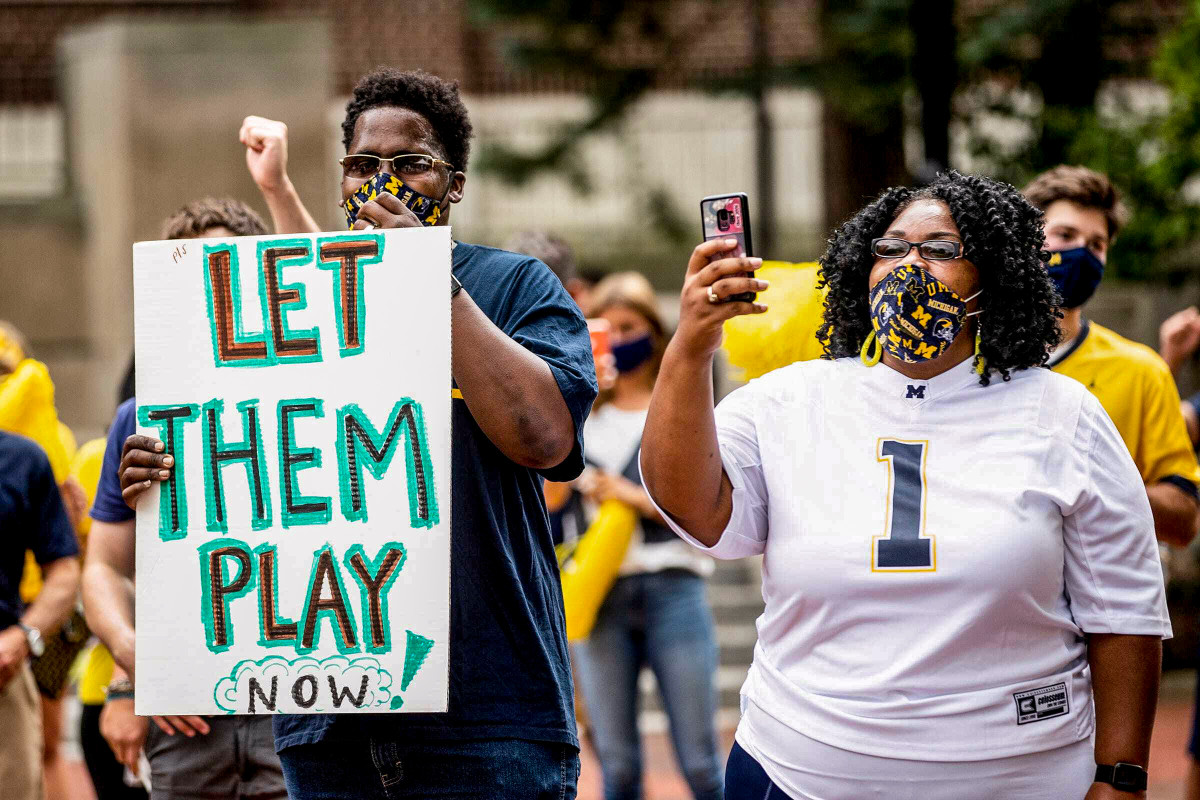
For months, coaches and athletic directors insisted that the motivation to play football would keep athletes away from behaviors that enhanced the chance for testing positive. Games were the proverbial carrot on a stick that would keep them healthy.
It wasn’t a cure-all—teams still had plenty of positive tests, and there were plenty of in-season shutdowns around the country. Playing football didn’t stave off COVID-19, and there was no way to test a team out of trouble—the tests merely revealed trouble, or the lack thereof. And yet, if you ask medical experts, they say the numbers still underscore that college football teams were safer populations than most.
“The student-athlete positivity rate compared to campus at large was always lower, and campus positivity rates were lower than the surrounding communities,” said Dr. Doug Aukerman, senior associate athletic director for sports medicine at Oregon State and a leading voice on the Pac-12 medical advisory group. “The student-athletes were allowed to engage in something they wanted to do, with protocols and testing in place, and it gave them another reason to practice all the safety measures that society at large has failed at miserably.”
Aukerman said it’s “too soon to tell” what the potential impact of the heart condition myocarditis will be on the athlete population. There were cases of it associated with COVID-19, but thus far the specter of life-threatening illness or even death as a result of playing football has not entered the equation.
“It’s obvious we can play sports in this environment,” says Florida athletic director Scott Stricklin. “There doesn’t seem to be any transmission through competition.”
Aukerman agreed. “The positive cases weren’t from what happened at practices and games. They happened outside athletics. … Was it right for athletics to move forward? That’s not what people should be focusing on. It’s why society at large couldn’t do what it needed to do.”
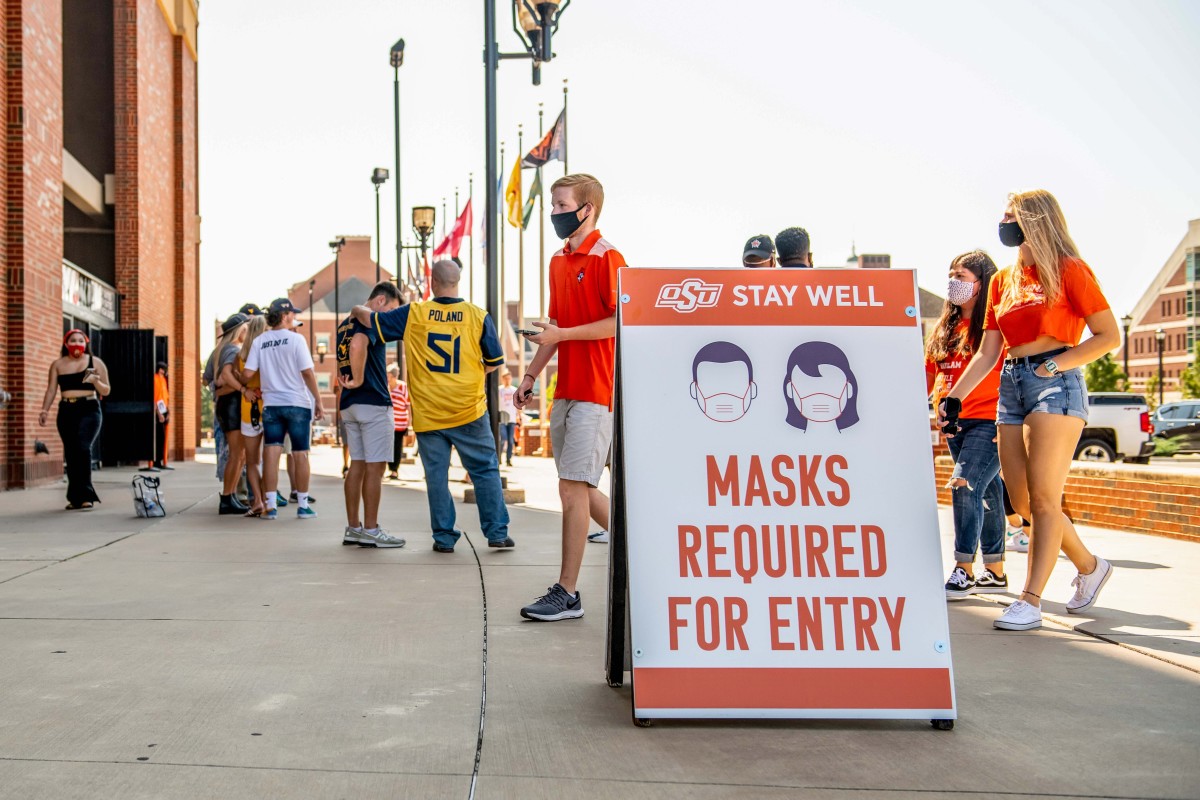
For the people in college sports charged with balancing budgets, the season absolutely was worth it. Because they shudder to think where they’d be without it.
“The narrative has been ‘this game is canceled and that game!’ ” says West Virginia athletic director Shane Lyons, who chairs the NCAA Division I Football Oversight Committee. “But we’re not talking about the 80% being played. … If you told me in August we’d get 80%, I would have taken that.”
Coming reasonably close to fulfilling the downsized schedule of games means Power 5 schools still will receive tens of millions in conference media-rights revenue. It won’t be a customary oil gusher—most Big Ten schools received $54 million each last year—but it certainly beats getting nothing. Conferences delivered the majority of their expected inventory to broadcast partners.
That football revenue pays for most athletic department expenditures. The threat to nonrevenue sports from a season shutdown was real, although many schools used the pandemic as an excuse to jettison sports they don’t want to fund, anyway. Gymnastics, tennis, swimming and diving and wrestling have been severely impacted.
Even with the media-rights money, other revenue streams largely dried up. Attendance was either drastically limited or nonexistent, depending on local ordinances. Going from 100,000 fans eight Saturdays a year to zero fans, in some locales, is a major hit. And that’s with the added expense of massive testing undertakings.
“I’ve asked a lot of athletic directors this question: Was this football season worth all of the expense and effort?” says Michael Smith, who covers the business of college athletics for Sports Business Journal. “Every AD said yes, which is predictable. They saw it as their responsibility to provide their athletes with an opportunity to play, and for the most part they did that.
“The budget, however, will tell a much different story. Power 5 schools are projecting financial losses in the tens of millions, and in some larger athletic departments, like Ohio State’s, the shortfall for 2020–21 is projected to be more than $100 million. Schools are going to take the hit with reduced revenue from media rights, ticket revenue, premium seating sales, sponsorships, donations. It’s hard to imagine a revenue stream that hasn’t been impacted. … Schools have really worked hard at getting fans to roll over their donations and ticket purchases to 2021 to mitigate the amount of refunds, and that has helped.
“From a business standpoint, I’m really curious to see if some of the cost-cutting in 2020–21—reduced staff, more conservative travel, new regional scheduling models—will become the norm or if athletic departments go right back to their old spending habits.”
It would require a drastic change of habit for a new normal to take effect. The largest athletic department expenditure is more football, of course—bigger staff, bigger paychecks, bigger buildings, another layer of opulence to use as recruiting incentives. The new Florida football building will feature an outdoor pool, the kind you’d see at a luxury hotel (the pool will be available to all Florida athletes, but it is part of the football facility footprint). A proposed new Auburn football facility would have recording studios and a flight simulator.
So did they need the money? Yes, they needed the money. Which is why so many people in charge pushed hard to play. Schools, conferences and NCAA leadership were all willing to delay championships in every fall sport to 2021—every fall sport except the one that makes money, football. The argument that the motivating factor for having a season was that the athletes wanted to play rings hollow when taking into account that only the football players actually got to play a meaningful season.
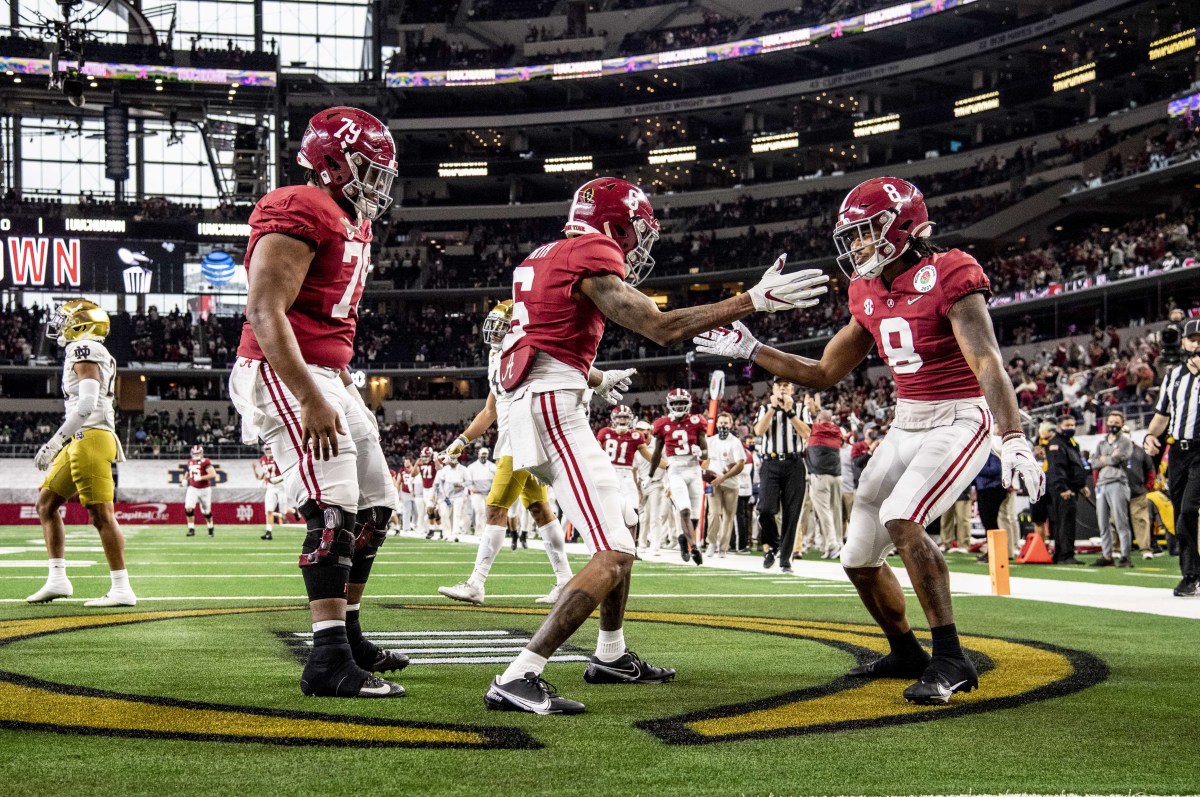
The College Football Playoff management committee is staying at the Ritz-Carlton on Miami Beach, because of course it is. The group, composed of the 10 FBS conference commissioners plus Notre Dame athletic director Jack Swarbrick, has grown accustomed to this lifestyle. Even while the individual athletic programs within their conferences are slashing budgets, the ethos at the top is treat yourself, don’t cheat yourself.
Saturday afternoon, Big Ten commissioner Kevin Warren settled in at a table at the Ritz’s outdoor dining area. Joggers and walkers rolled by on the other side of a hedge, and beyond them was the beach. If anyone involved in this enterprise was ready for a warm and soothing getaway, it was Warren.
Nobody was put through the play-or-not wringer quite like the first-year commissioner who came from the NFL. His conference initially opted against a fall season but then opted back in after a withering barrage of pressure from players, parents, school administrators and politicians. Having emerged on the other side of the firestorm with a team in the national championship game, Warren is ready to declare the season a success. Not just for the Big Ten, but for everyone in the Power 5 conferences.
“How we got here,” Warren says, weaving his hands through the air in a serpentine fashion, “we all took different approaches. It was not easy, with all the ramifications. But I was cheering for all our schools, and every school in the [Power] 5. Every time I saw a [Power] 5 school be able to play a game and stay healthy, that’s a success.”
The different approaches by different conferences underscored one of the glaring inefficiencies of the sport: It is run by a self-interested oligarchy. There is no one looking out for the greater good of the entire enterprise.
“Some conferences succeeded much better than others,” Fowler says. “The Pac-12 didn't really have a season, and it pains me to say that because I love that conference. Were they even a part of college football in 2020? I'm not sure.
“Other conferences played most of their games. It was problematic. The staggered start, the different protocols—fans were confused. It gives rise to all sorts of theories and suspicions, which wasn't good for the sport.”
FBS football operates outside the NCAA purview, which leaves the conferences to do their own thing—sometimes cooperatively, but often not. After pledging solidarity last spring, that commitment splintered and broke into five pieces, one for each power conference.
“One thing this season reminded us is that the leadership structure in college athletics at the highest level is fragmented and fragile,” says Smith of the Sports Business Journal. “The pandemic and the uncertainty around the start of college football further highlighted the need for someone to be in charge. When five people are in charge, no one is.
“Ultimately, they’re looking out for their own interests, and that’s how we wound up with this every-man-for-himself scenario where some conferences were playing, some weren’t playing, and then they were playing again. That period from August to October did not serve college football well.”
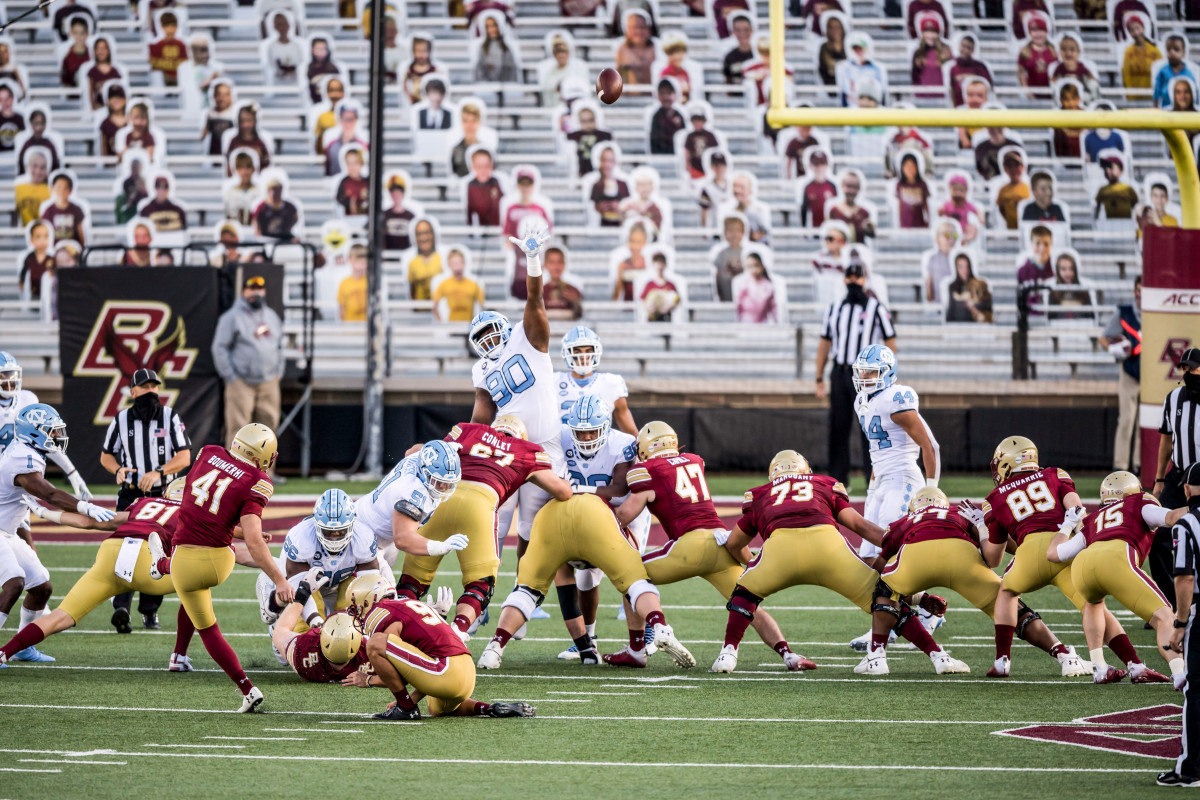
For the fans, this was a season of sacrifice as well. The vast majority of them never entered a stadium or tailgated outside of one. Nowhere near as many as usual gathered at sports bars or watch parties. The communal quality of college football all but disappeared, replaced by home viewing in semi-isolation.
Theoretically, that would have sent ratings soaring: take millions of fans out of the stadium and plunk them down in front of TV sets. The year-over-year regular-season ratings are almost impossible to divine, given how different this season played out—games in some slots were 100% (or more) higher or lower than 2019. But the playoff semifinal ratings were down by a small amount. That’s despite the ideal setup: marquee matchups of Alabama against Notre Dame and Ohio State against Clemson, and the games slotted at 4 p.m. and 8 p.m. ET on New Year’s Day.
Of course, ratings have been down in almost every area of televised sports. There is no easy answer for why, just a lot of theories. As far as college football, the fans might have been like many of the players themselves—increasingly weary from all the disruptions, disoriented by the unnatural rhythm of the season, unable to latch on to their teams like normal.
In a sport steeped in tradition and spiced by pageantry, all of that was disposable in 2020. The rituals were all gone. The accompanying noise extinguished. There were games, but not many events.
“Showing up and playing in a mostly empty stadium,” says Stricklin, identifying the biggest departure from football as he’s known it. “It’s kind of a first-world problem. There are multiple times you say ‘Man, this is weird.’
“But the worst day in 2020 by far was having to tell our athletes last March that their season was over and there wasn’t going to be an NCAA [basketball] tournament. The opportunity to give our student-athletes the ability to compete, that’s definitely worth it.”
